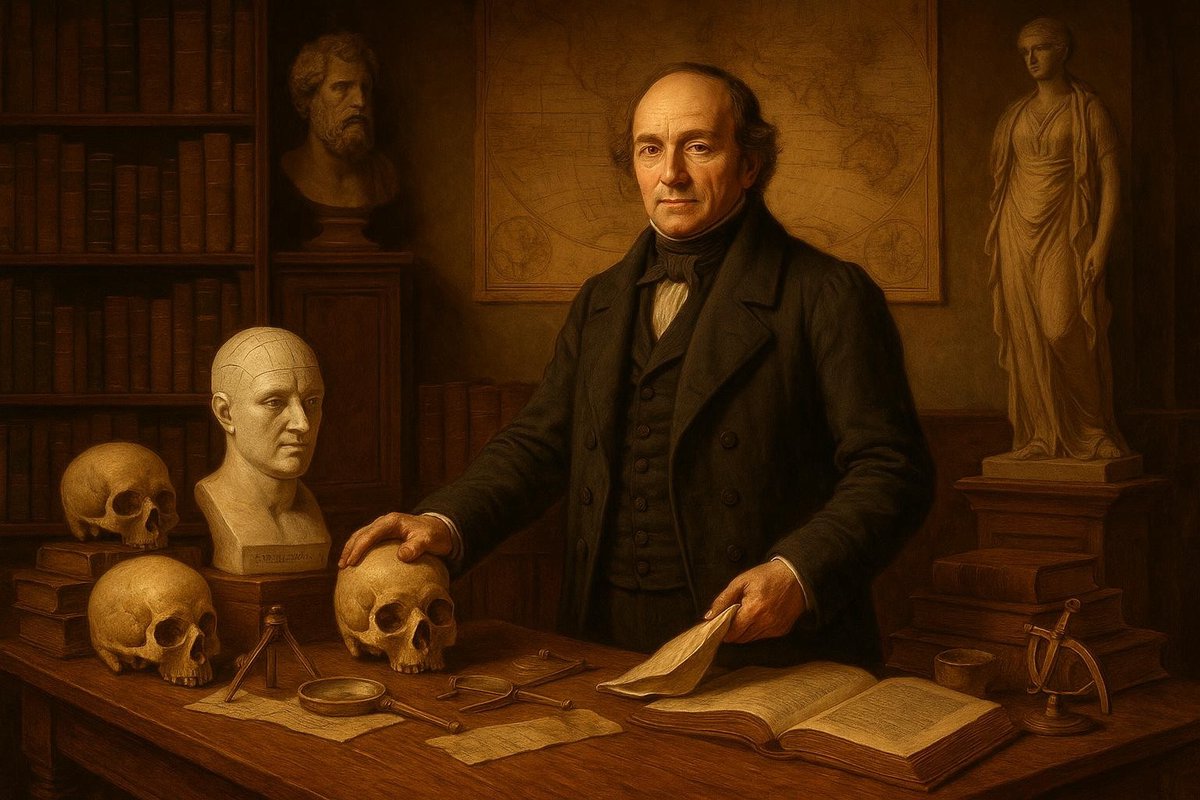
Early Influences
It all began with Franz Joseph Gall, a German physician born in 1758, whose quest to understand the human mind led him to propose an intriguing theory. Gall, driven by a fascination with the brain, believed that its shape could reveal personality traits and intellectual abilities. Raised in an era where the Enlightenment was reshaping the sciences, his environment was ripe for new ideas, even those teetering on the edge of credibility.
- Gall was influenced by the Enlightenment, a period that encouraged questioning and exploration.
- He observed classmates with similar talents and physical traits, sparking his curiosity.
- The idea of linking physical attributes to mental faculties gained traction due to the period’s empirical focus.
Interestingly, Gall’s early observations might not have stood out if not for the cultural context that cherished empirical evidence, even when speculative. This backdrop allowed his ideas to take root and grow, despite their controversial nature. One might wonder, would Gall’s theories have seen the light of day in a less inquisitive age?
Mental Models
Gall’s approach was rooted in a belief that individual differences arose from physical brain structures. He theorized that the brain was the organ of the mind, and specific areas corresponded to distinct faculties. This was a bold hypothesis, particularly when brain anatomy was still a mystery to many. His method? Measuring skulls and linking bumps with characteristics like benevolence or combativeness.
- Gall mapped the brain into regions governing various traits.
- His theories were based on anecdotal evidence rather than scientific rigor.
- He created a chart with 27 areas, each linked to a specific trait.
Of course, while his logic attempted to bridge the tangible with the intangible, it lacked the empirical validation we demand today. His reliance on correlational observations without experimental controls shows the limitations of his mental model. As time goes on, we see these early attempts at understanding the brain as more conjecture than science.
Challenges & Resilience
No radical idea comes without its challenges, and Phrenology was no exception. Gall faced skepticism from the scientific community, yet his ideas spread like wildfire among the general public. Why? Likely because it offered a seemingly straightforward way to evaluate human behavior—a tempting proposition in a world craving understanding.
- Gall’s theories were criticized for lack of empirical evidence.
- The popularity of Phrenology grew despite scientific critiques.
- Phrenology was used to justify social hierarchies and prejudices, raising ethical concerns.
This resilience can be attributed to its appeal and simplicity. Yet, it’s essential to question whether popularity equates to validity. How often do we see flawed ideas gain traction purely because they offer easy explanations? This highlights the importance of critical examination in distinguishing discovery from misconception.
Legacy
While Phrenology is now discredited, its impact lingers in surprising ways. It fostered a public interest in brain science and laid the groundwork for later neuroscientific explorations. Moreover, it serves as a cautionary tale about the power of constructed ideas masquerading as scientific facts.
- Phrenology is seen as a precursor to modern psychology and neuroscience.
- Its flawed approach highlighted the need for robust scientific methodologies.
- It reminds us of the societal impact pseudoscience can have when unchecked.
As we reflect on Gall’s legacy, we must consider how easily ideas can be accepted as truth without rigorous scrutiny. Could today’s accepted theories face similar reevaluations in the future? This is the crux of scientific progress—continually questioning and refining our understanding.
Fuel Someone Else’s Curiosity
In discussing Phrenology, we’re reminded of the power ideas hold, for better or worse. Sharing this exploration can spark curiosity and encourage others to question the status quo. Invite your friends and colleagues to delve into this captivating history, perhaps inspiring a debate or a new understanding of how science evolves. Let’s keep the conversation going!
Phrenology invites us to reflect on how we interpret scientific discovery and construct knowledge. Engaging with these stories can fuel curiosity, drive discussion, and perhaps ignite a spark of critical thinking in someone else.

Leave a Reply